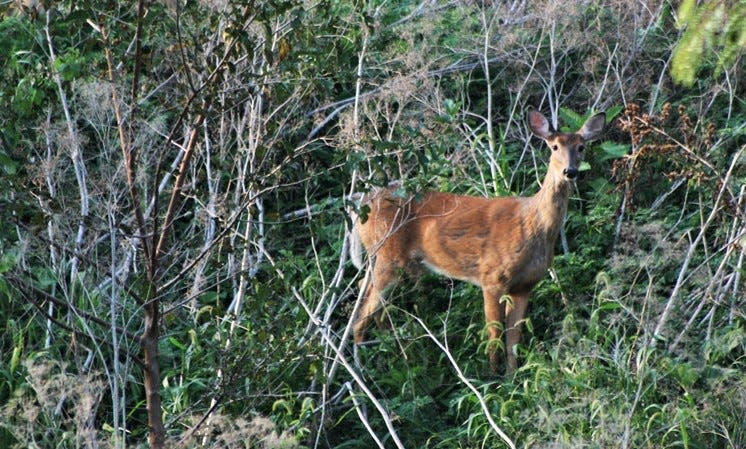Ohio calls on hunters to help control spread of chronic wasting disease in deer

Big game in Ohio begins and ends with deer. Hence, what affects the state’s whitetails matters big time among hunters.
When, during the 2020-21 season, two free-ranging deer taken in the area around Killdeer Plains Wildlife Area in southern Wyandot County were discovered to be infected with chronic wasting disease (CWD), there was some hope the outbreak could be contained.
Got our app? Read stories on your phone with the Dispatch.com app, available for both Apple and Android devices
The discovery this year of nine more infected deer in an expanded area that includes northern Marion County threatens that outlook.
“I talked with someone I respect a lot, and he said it’s likely with 11 infected deer that the ‘E’ word applies,” said biologist Mike Tonkovich, deer specialist with the Ohio Division of Wildlife. “The ‘E’ can mean endemic or established.”
CWD in Ohio deer: Is containment still possible?
The division intends to continue its containment/eradication efforts, but that will be difficult.
In order to find suitable habitats, young bucks escaping reigning bucks have to travel farther in areas where cropland instead of forest dominates Tonkovich explained. Movement typically follows streams and rivers, which in Ohio, are often tree-lined and sheltered.
The discovery of multiple infected deer indicates increased chances at least some of the roving animals are infected.
Until the CWD outbreak in Wyandot County, instances of the disease in Ohio were confined to several locations where deer were propagated or kept for fenced hunting. In those cases, the source of the disease could be established, the herd euthanized and access to infected ground restricted.
Deer running wild represents added challenge.
Still, “we are optimistic when can control this at least for a while,” Tonkovich said.
CWD is caused by a protein known as a prion. The prion causes a slow, agonizing death by attacking the brain and nervous system.
Research has shown CWD prions can remain in the soil frequented by deer for years and can be taken up in plants on which deer feed. Given the persistence of the prion, it’s not out of the realm of possibility the disease can be spread by carrion feeders who eat infected remains.
For those reasons, the source of the CWD outbreak at Killdeer Plains isn’t likely to be traced, and to slow the spread of CWD, “hunters are going to have to support us,” Tonkovich said.
Hunters who take deer in the CWD zone during the upcoming hunting season will be expected to follow restrictions designed to keep potentially infected body parts from contaminating non-infected areas. The restrictions can be found in the 2022-23 hunting regulations booklet.
Division personnel will also be on hand during a pair of open houses to talk about sampling efforts around the outbreak zone. A meeting is scheduled for 6:30 p.m. Tuesday in Upper Sandusky at the Wyandot Country Fairgrounds dining hall, and a second meeting will be held in Marion at 6:30 p.m. Thursday at the Marion County Sheriff’s Office inside the Harding Room.
Boating safety encouraged
Ohio boaters can have their vessels inspected for free this upcoming Saturday (9 a.m. to 2 p.m.) and Sunday (10 a.m. to 2 p.m.). America's Boating Club of Central Ohio will be holding the exams at the Alum Creek Marina, Hollenback Launch Site.
These are no-penalty inspections meant to ensure a boat meets federal standards and that the vessel includes all necessary safety equipment. Among the items checked will be life jackets, fire extinguishers, lights, visual and sound signaling devices, ventilation and backfire flame control.
Those wishing to participate must bring their registration.
This article originally appeared on The Columbus Dispatch: Chronic wasting disease: Ohio deer hunters face restrictions

